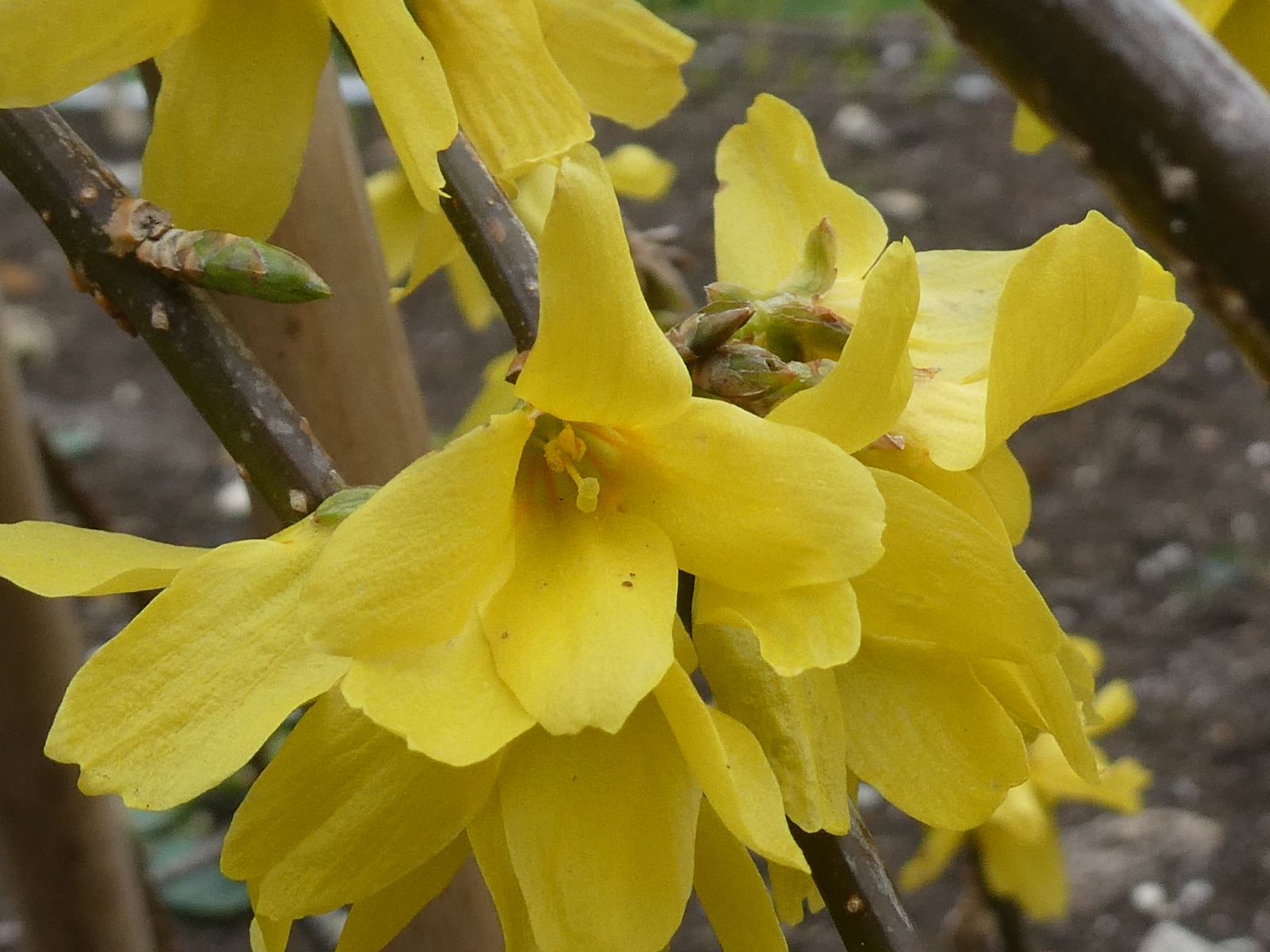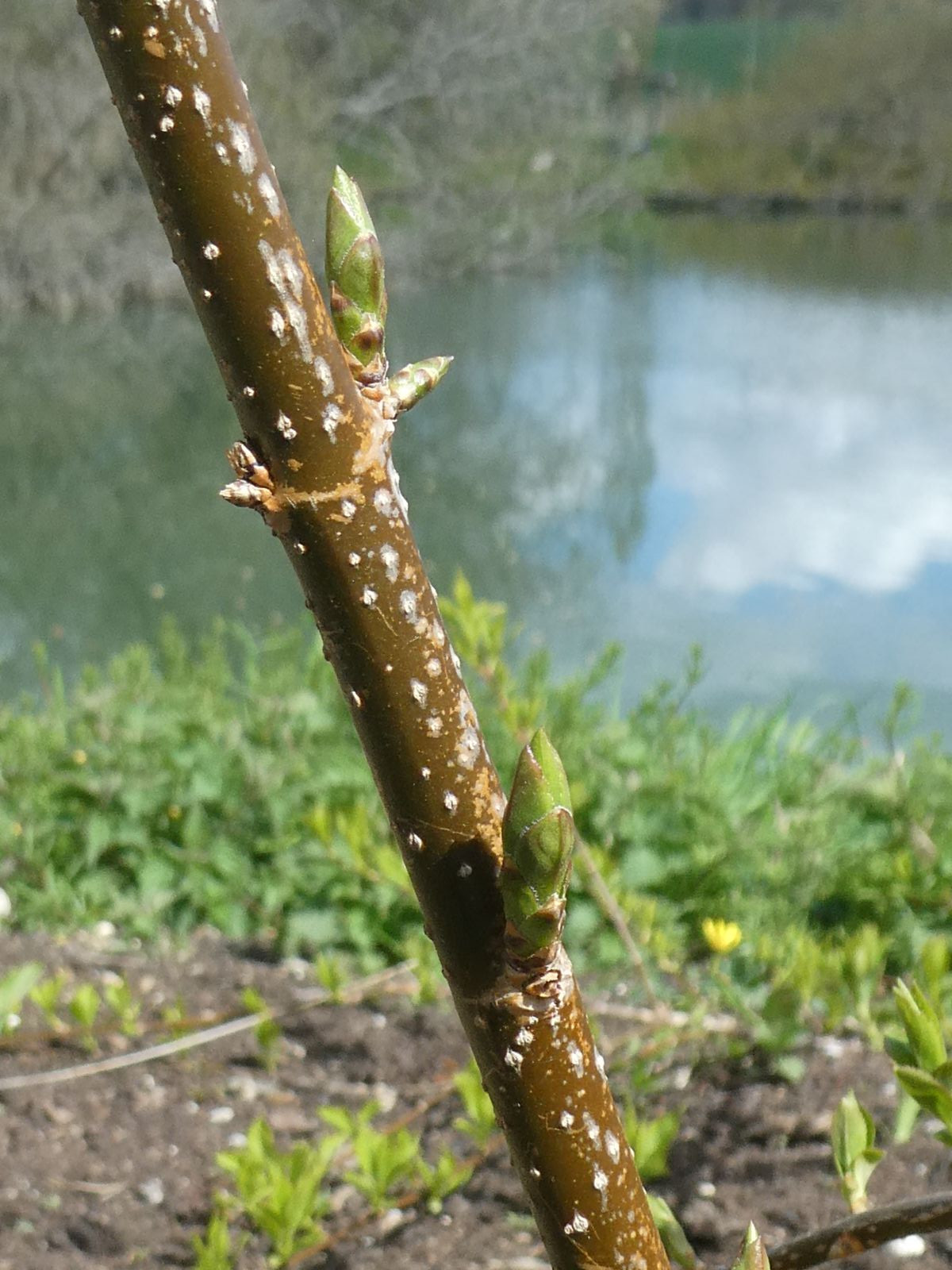Forsythia ovata
Sponsor
Kindly sponsored by
Monique Gudgeon, Sculpture by the Lakes
Credits
Owen Johnson (2022)
Recommended citation
Johnson, O. (2022), 'Forsythia ovata' from the website Trees and Shrubs Online (treesandshrubsonline.
Genus
Common Names
- Korean Forsythia
- Early Forsythia
Infraspecifics
Other taxa in genus
- Forsythia 'Arnold Dwarf'
- Forsythia europaea
- Forsythia 'Fontanna'
- Forsythia 'Ford Freeway'
- Forsythia giraldiana
- Forsythia 'Gold Splash'
- Forsythia 'Golden Times'
- Forsythia 'Happy Centennial'
- Forsythia 'Helios'
- Forsythia × intermedia
- Forsythia japonica
- Forsythia 'Kanárek'
- Forsythia × kobendzae
- Forsythia koreana
- Forsythia likiangensis
- Forsythia 'Little Renee'
- Forsythia 'Maluch'
- Forsythia × mandshurica
- Forsythia 'Meadowlark'
- Forsythia nakaii
- Forsythia 'New Hampshire Gold'
- Forsythia 'Northern Gold'
- Forsythia 'Northern Sun'
- Forsythia 'Paulina'
- Forsythia 'Princeton Gold'
- Forsythia 'Robusta'
- Forsythia saxatilis
- Forsythia 'Spring Beauty'
- Forsythia 'Spring Gold'
- Forsythia suspensa
- Forsythia 'Tremonia'
- Forsythia × variabilis
- Forsythia 'Verfors'
- Forsythia viridissima
- Forsythia 'Winterthur'
- Forsythia 'Yatgold'
A dense, spreading shrub to c. 1.5 m tall. Twigs glabrous, terete, pale grey-grown; pith chambered. Leaves 4–9 × 3–6 cm, suborbicular to ovate, shortly acuminate, base rounded or slightly cordate; margin coarsely toothed to nearly entire; both sides glabrous; petiole 6–12 mm. Flowers usually carried singly from each leaf-scar in early spring. Calyx with broadly ovate lobes sometimes as long as the corolla tube. Corolla bright yellow, small (c. 2 cm wide). Fruit c. 12 mm long, ovoid, long-pointed. (Bean 1981).
Distribution North Korea South Korea In about five mountain refuges
Habitat Forests, 300–1000 m asl.
USDA Hardiness Zone 3
RHS Hardiness Rating H7
Conservation status Endangered (EN)
Forsythia ovata is the only member of its genus to have been assessed so far as Endangered (IUCN Red List of Threatened Species 2016). A 2009 study by Kim et. al. found five populations south of the Korean border on Mt. Seokbyeong, Mt. Seorak and Seokgae-jae (Kim et al. 2009), and the species is also suspected to survive north of the border; this implies that it may in fact be the least rare of the four forsythias endemic to the Korean Peninsula.
The species was described by Takenoshin Nakai in 1917 from the Diamond Mountains, an area now just into North Korea; seed was collected here in the same year by Ernest Wilson (W 10456) and was sent to the Arnold Arboretum in Massachusetts (DeWolf & Hebb 1971), reaching Kew not long afterwards (Bean 1981). Forsythia ovata remains the most familiar of the Korean species in western gardens and, like the others, is very hardy, with its flower-buds able to withstand as much as 40°C of frost in central Canada (Stewart 2021). Its ovate leaves are broader than any the more familiar garden hybrids, and may even be slightly heart-shaped at the base. Bean observed that some plants sold as F. ovata (or ‘F. ovata robusta’) in Europe in the 1950s were not this species but were presumably F. ‘Robusta’, a plant which may belong under F. viridissima (Bean 1981).
The flowers are smaller and less profuse than in the best hybrid forsythias, and F. ovata was first experimentally crossed with F. europaea in the Arnold Arboretum before 1935 (Wyman 1961) in the hope of producing a superior garden hybrid; of the seedlings, the very hardy F. ‘Meadowlark’ remains in commerce, and since that time F. ovata has contributed its genes to a number of other successful cultivars. The name ‘F. × interovata’ is sometimes used for crosses between F. ovata and F. × intermedia, but lacks a valid description.
'Dresdner Vorfrühling'
Synonyms / alternative names
Forsythia ovata 'Dresden Early Spring'
A German selection with paler flowers (Dawes Arboretum 2022), still widely grown in central Europe.
'Floraliz'
A selection made at the University of Calgary, Canada, but not proving particularly hardy in trials in 2005 (Crop Diversification Centre South 2006).
'French's Florence'
French’s Nursery in New Hampshire obtained seeds from Ernest Wilson’s orginal introduction of Forsythia ovata to the Arnold Arboretum. One seedling, which first flowered in 1930, had paler blooms which survived even the hardest New England winters, and was named in 1940 after Florence K. French (Arnold Arboretum 2018).
Although of no particular interest in a milder climate, ‘French’s Florence’ is still represented in the UK National Collection of forsythias at Sculpture by the Lakes in Dorset by cuttings taken from the former collection at Pershore College (M. Gudgeon pers. comm.).
'Ottawa'
A hardy selection made at the Central Experimental Farm in Ottawa, Canada (Hatch 2021–2022); it is ‘thrum-eyed’. Although of no particular interest in a milder climate, this old clone is currently available in the UK from Hutchings and Sons, who got their material from a plant in the former National Collection of forsythias at Pershore College, which had come in turn from RHS Garden Wisley (M. Gudgeon pers. comm.).
'Sunrise'
Synonyms / alternative names
Forsythia ovata 'Early Sunrise'
Forsythia ovata ‘Sunrise’ was raised by Jack Weigle at Iowa State University as a hardy forsythia with a dense, mound-like shape (Missouri Botanical Garden 2022). Alain Cadic (Cadic 1988) states that both parents were clones of F. ovata, but this is questioned by Michael Dirr (Dirr 2009), and ‘Sunrise’ is sometimes listed as a cultivar simply of Forsythia, or even of F. × intemedia. It is represented in the UK National Collection at Sculpture by the Lakes in Dorset by cuttings from a plant in the former collection at Pershore College, which had in turn come from RHS Garden Wisley (M. Gudgeon pers. comm.).
'Tetragold'
A colchicine-induced tetraploid, distributed by Proefstation V D Boomkwekerij in Holland in 1963; it has a dense habit and flowers particularly early (Edwards & Marshall 2019). It thrives in Alberta, Canada (Stewart 2021) and is represented in the UK National Collection of Forsythias at Sculpture by the Lakes in Dorset by a plant obtained from Weasdale Nursery (M. Gudgeon pers. comm.). It is ‘pin-eyed’.






